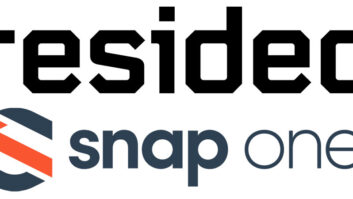
One of the biggest changes that occurred when Residential Systems’ parent company, NewBay Media, was purchased by Future plc over a year and a half ago was the latter company’s emphasis on manager training and teaching us better communication skills with our direct reports.
They particularly stressed the importance of regular one-to-one meetings, or, as they appear on the calendar, 121s. These are informal, but scheduled, meetings with each direct report. They can be as short as 15 minutes or go on for an hour — its length is typically determined by the needs of the person you are meeting with.
If I’m being honest, these early efforts to focus my attention on my management skills were met with skepticism. I’d been at this for years. I talk to my people constantly. If they want me, they can easily get to me. Open-door policy!
All of that is true, but the 121s allowed the conversations to stop being reactionary or task-of-the-moment related and instead opened my already open door to truly see the job from the perspectives of my direct reports. It was pretty eye-opening once I got into it.
There are no set rules or guidelines for 121s — they are driven by what you need to get from your employees and what they need from you or the business. Originally I was told to take notes during each meeting — which was added to a shared Google doc between me and the employee; one that they could add to as well. However, as we went on, the note taking seemed to be in the way of the dialog, and now I just jot a few things down after the meeting is over, basically anything that needs a follow up. The meetings can take place in person, over video chat, or even over coffee or lunch.
I learned quite a bit in my initial meetings, including some quick fixes that immediately improved productivity. I learned a few techniques that my other editors were doing that I could apply to my own day-to-day. I use it to provide feedback from other departments on how we can improve. Really, the open nature of them allow anything to be discussed, which means anything can happen.
I hold 121s with my directs once a month, scheduled for a half-hour. Our People & Culture team’s research shows that holding them bi-weekly is the most effective method, but we are deadline oriented, and I don’t want the meetings to become burdensome.
I will admit that the first few meetings revealed much more than subsequent ones, but that is to be expected. There are still times when an important need is uncovered, and all the conversations are worthwhile. Sometimes we take the full half-hour, sometimes we are done in 15-20 minutes. Whatever is needed.
Dave Donald’s Business Book Club this month features The Coaching Habit by Michael Bungay Stanier, and in the column Dave discloses some of the questions Stanier asks the people he coaches, and they are not dissimilar from the ones asked in a 121. It could provide a good starting off point for your own meetings.
It may sound daunting (I know it did to me), but I have seven direct reports, which is probably similar to many of you. One regularly scheduled half-hour 121 each month per person is a great way to keep up-to-date with the people you manage. It is good for them to have time with you, and you never know what you will learn in return.






